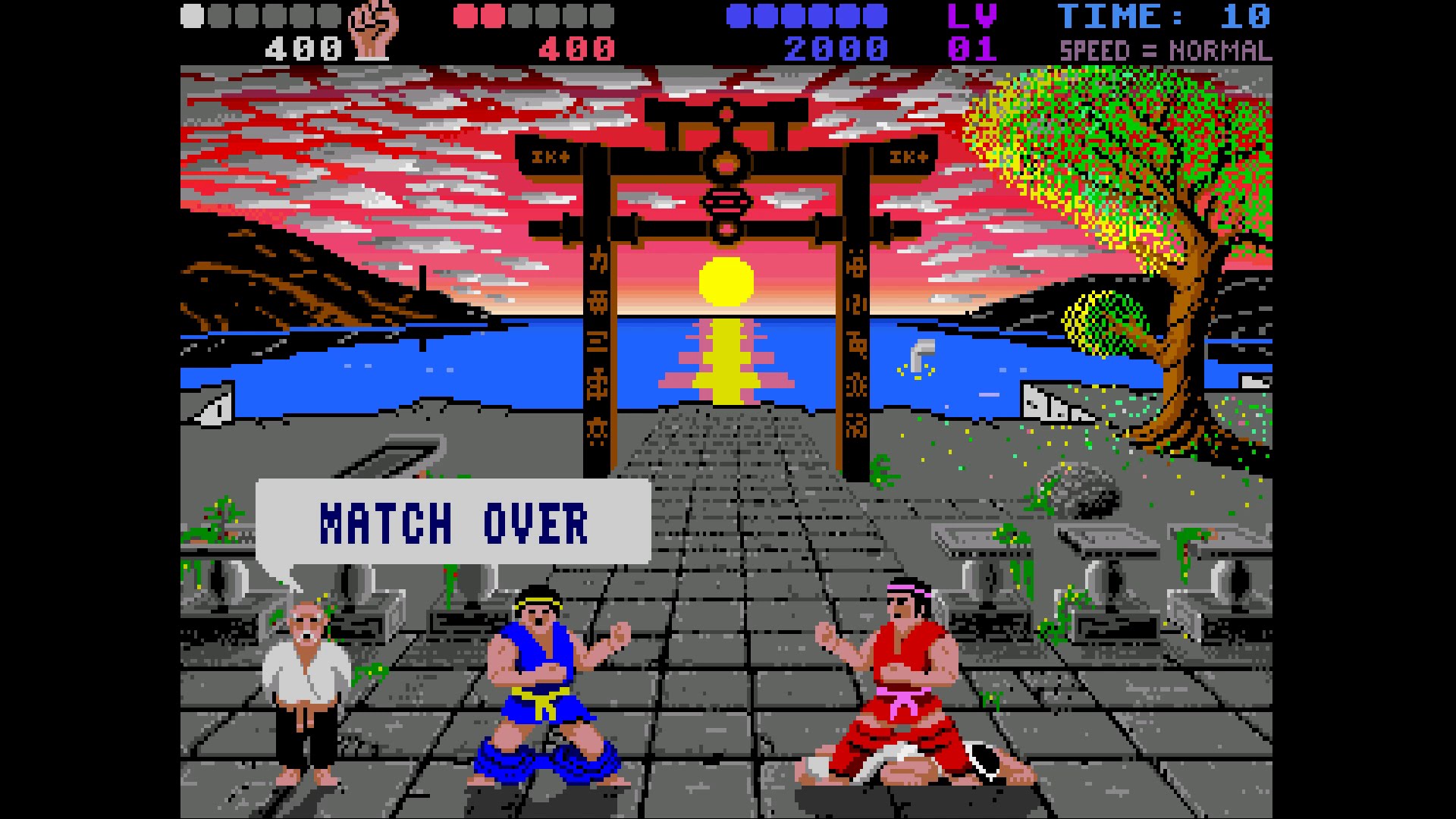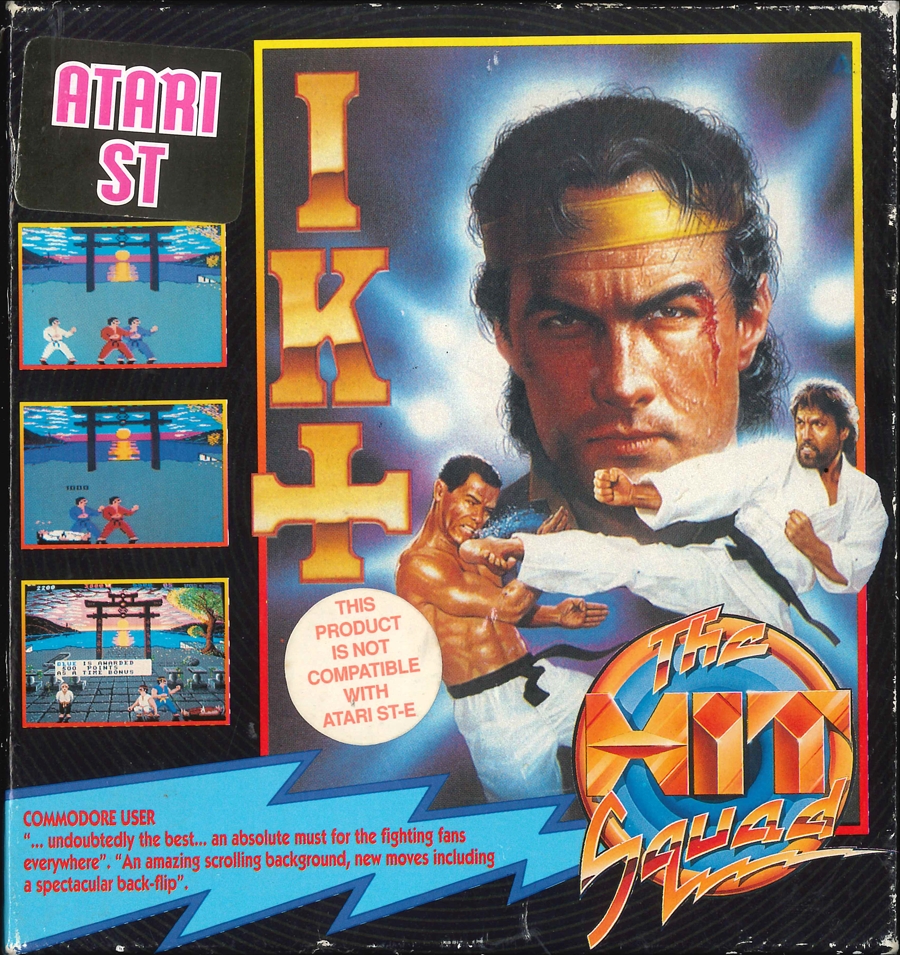How footage from Grease and The Cannonball Run wound up in IK+
What do Grease, The Cannonball Run and 80s fighting game IK+ have in common? Early performance capture...
This article comes from Den of Geek UK.
These days, things like realistic animation and performance capture are a common sight in videogames – games as varied as L.A. Noire, The Last Of Us and Beyond: Two Souls all use mo-cap and actors to create their uncannily lifelike character movements. But 30 years ago, squeezing smooth, convincing animation into a computer was a far trickier proposition.
For its time, the 1987 fighting game International Karate + (often abbreviated to IK+) looked stunning. Designed by British programmer Archer MacLean, and a sequel to his own International Karate, it allowed one or two players to fight one another in a fast, smooth virtual tournament. Although its design was inspired by earlier games of its type, including Data East’s Karate Champ arcade machine and the 1985 brawler Way Of The Exploding Fist, IK+ was faster and smoother than either title, and, in a first for a fighting game, also saw a third opponent enter into the fray.
(Oh, and there was also a rather cheeky hidden Easter egg: pressing a button on the keyboard made the combatants’ trousers fall down. Now there’s something you never got in the Street Fighter franchise.)
To get the fighters performing their punches, kicks and flips so smoothly, MacLean employed a technique that was pioneered in animation’s early years: rotoscoping. In a nutshell, rotoscoping involves tracing over live-action footage to create natural-looking movement in animated characters; one of the most famous examples of this technique can be seen in Disney’s 1937 classic, Snow White And The Seven Dwarves. Animators like Max Fleischer and Ralph Bakshi also adopted the technique to impressive effect.
In the new realm of videogames, designer Jordan Mechner had used rotoscoping for his own fighting game earlier in the decade; for 1984’s Karateka, Mechner drew over images of his karate teacher to create some of the most impressive videogame animation yet seen. It’s a technique he’d use to even greater effect in the 1989 action adventure, Prince Of Persia, where its characters moved with uncanny realism through a maze of 2D platforms.

For IK+, MacLean came up with his own simple yet ingenious method of capturing live-action footage, as he explains in Read Only Memory’s book, Britsoft:
“I found myself jumping around at home doing my own karate moves, because I did some at university, videotaping it then slow mo-ing it. The trick was how you got that into the computer. It seemed fairly simply to me to put cellophane over the screen and resize the TV picture […] Then I just freeze-framed and drew an outline around it on the cellophane, then advanced the tape three more frames, and drew it again.”
These outlines on cellophane were then recreated in a software package called NEOchrome, one pixel at a time.
There were, however, a couple of moves too difficult for MacLean to pull off himself: a backflip and a fancy-looking split kick, where a fighter could knock down both opponents in one swoop. For these, MacLean dusted off a couple of VHS tapes. One was the 1978 musical Grease, starring John Travolta and Olivia Newton-John, and the other was The Cannonball Run, the 1981 action comedy starring Burt Reynolds and Jackie Chan.
The backflip was traced from one of the final sequences in Grease, where a dancer can be seen performing the move straight across the screen. The dancer’s small and in the distance – largely crowded out by John Travolta, selfishly hogging the shot – but you can just about see him bust his move around 4:20 into the clip below.
The split-kick, meanwhile, came from Jackie Chan’s fight sequence in The Cannonball Run – if you watch the clip below at the 38 second mark, you’ll see it for yourself:
Released first for the Commodore 64, ZX Spectrum and Amstrad CPC, before appearing on the Atari ST and Amiga the following year, IK+ was widely praised for the flow of its combat and – of course – the quality of its graphics and animation. Even today, the characters’ movements look convincingly fluid:
One of the most impressive and acclaimed fighting games of its day, IK+ did much to popularise the fighting game genre, at least until the seminal Street Fighter II, with its anime-style graphics and complex move-set, came along in 1991.
Back in the 80s, when players were happily gathered round their computers playing IK+, they were blissfully unaware that a couple of the game’s most impressive moves owed a debt to two very different films.
Oh, and the advertising for IK+ also cribbed from the movies, with one face on one version of the cover looking uncannily like Steven Seagal…
